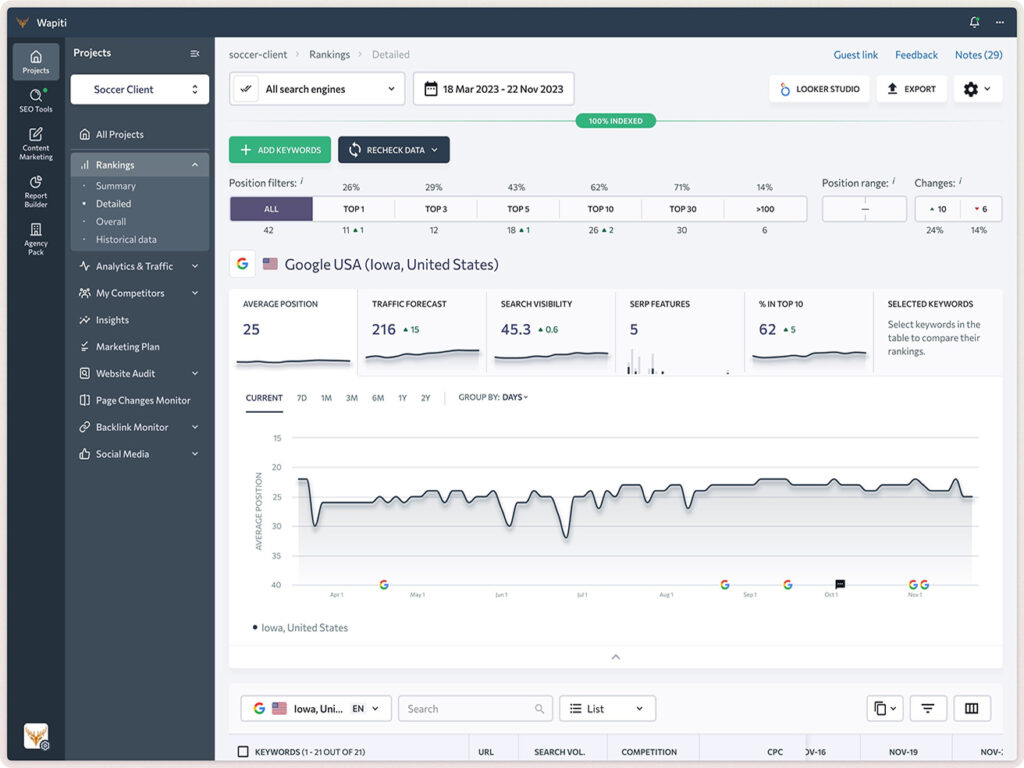Ready to level up your e-commerce game? Understanding and analyzing your website traffic is essential for optimizing user engagement, improving your SEO strategy, and increasing conversions. Here’s a comprehensive guide on how to effectively analyze your website traffic in five important steps.
Define Your Goals
Setting clear, measurable goals is the first and most important step in analyzing your website traffic. Without well-defined goals, it’s challenging to determine what aspects of your site are performing well and what needs improvement. By setting specific objectives, you can focus your efforts on activities that drive real results.
Identify Key Objectives for Your E-commerce Site
Before diving into the data, it’s crucial to define what success looks like for your e-commerce site. Clearly outline what you want visitors to do on your site—whether it’s boosting sales, increasing signups, or generating leads. Defining your goals will help you measure the effectiveness of your strategies and understand where to focus your efforts.
Set Specific, Measurable Goals:
- Sales: Track the number of products sold and revenue generated.
- Signups: Monitor the number of newsletter or account signups.
- Leads: Measure the inquiries or form submissions you receive.
By having clear, measurable goals, you can better analyze your website traffic and understand how each visitor interaction contributes to your overall objectives.
Install Analytics Tools
Once you have defined your goals, the next step is to install analytics tools that will help you track and measure your website traffic. Analytics tools provide you with valuable data and insights into your site’s performance, enabling you to make informed decisions and optimize your strategies. One of the most powerful and widely-used tools for this purpose is Google Analytics.
Leverage Google Analytics for In-depth Insights
To start analyzing your website traffic, you need the right tools. Google Analytics is a powerful and widely-used tool that provides comprehensive insights into your site’s performance. Here’s how to get started:
- Set Up Your Account:
- Sign up for a Google Analytics account.
- Add your website as a property in the account.
- Install the tracking code on all pages of your website.
- Explore Key Metrics:
- Traffic Sources: Understand where your visitors are coming from.
- Bounce Rate: Measure the percentage of visitors who leave after viewing only one page.
- Session Duration: Track how long visitors stay on your site.
- Pages Per Session: See how many pages users visit during one session.
Google Analytics provides a wealth of data that can help you make informed decisions about your e-commerce site’s strategy.
Analyze Traffic Sources
Understanding where your website traffic comes from is essential for optimizing your marketing efforts and improving your overall site performance. Different traffic sources can provide insights into how visitors find your website and what drives them to your e-commerce platform.
Optimize Marketing Efforts by Understanding Website Traffic Sources
Knowing where your traffic comes from is essential for optimizing your marketing efforts. Google Analytics categorizes traffic into several sources:
- Direct Traffic: Visitors who type your URL directly into their browser.
- Referral Traffic: Visitors who come from other websites that link to yours.
- Organic Search Traffic: Visitors who find your site through search engines.
- Social Media Traffic: Visitors who arrive from social media platforms.

By diving deep into these traffic sources, you can determine which channels are most effective and allocate your marketing budget accordingly. For example, if organic search traffic is your largest source, investing in SEO can further boost your visibility.
Measure User Engagement
After understanding your traffic sources, the next step is to measure user engagement. User engagement metrics provide insights into how visitors interact with your website and can highlight areas where improvements are needed to enhance the user experience.
Track Key Engagement Metrics to Understand Visitor Behavior
User engagement metrics provide insights into how visitors interact with your website. Key metrics to monitor include:
- Bounce Rate: A high bounce rate may indicate that visitors aren’t finding what they’re looking for.
- Time on Site: Longer session durations typically suggest that visitors are engaged with your content.
- Pages Per Session: More pages per session indicate that users are exploring your site more thoroughly.
Improving user engagement is critical for retaining visitors and encouraging them to take desired actions. Analyze these metrics regularly to identify areas where your site can be enhanced to better meet visitor needs.
Monitor Conversions for Website Traffic
Monitoring conversions is the final and most crucial step in analyzing your website traffic. Conversions provide direct insight into how effectively your website is achieving its goals, whether it’s making sales, generating leads, or acquiring new subscribers.
Evaluate Your Site’s Effectiveness by Tracking Conversions
Conversions are the ultimate measure of your e-commerce site’s effectiveness. Tracking leads and sales generated by your site will help you evaluate performance and identify areas for improvement. Key conversion metrics include:
- Conversion Rate: The percentage of visitors who complete a desired action (e.g., making a purchase).
- Cost Per Conversion: How much you spend on marketing to achieve one conversion.
- Revenue Per Conversion: The average revenue generated per conversion.
By monitoring these metrics, you can determine the return on investment (ROI) of your marketing efforts and make data-driven decisions to optimize your e-commerce strategy.
Conclusion
Analyzing your website traffic is crucial for optimizing your e-commerce site’s performance. By defining your goals, installing analytics tools like Google Analytics, analyzing traffic sources, measuring user engagement, and monitoring conversions, you can make informed decisions that drive success. Implement these five essential steps to gain valuable insights and take your e-commerce game to the next level.
Elevate Your E-commerce Experience with Wapiti Digital
Ready to unlock the full potential of your e-commerce site? At Wapiti Digital, we specialize in helping businesses succeed online through tailored e-commerce solutions. From advanced Google Analytics setup to comprehensive user engagement strategies, we provide the tools and expertise you need to boost your conversions and achieve your goals. Contact us today to learn more about how we can help elevate your e-commerce experience!








